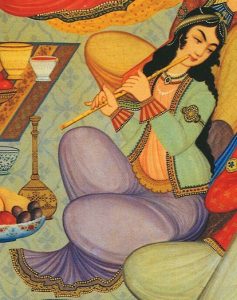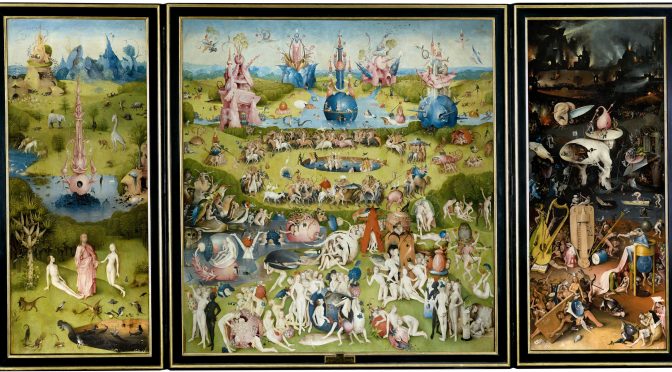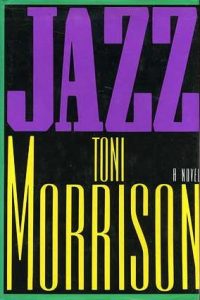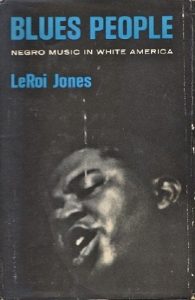Continuing my account on the Bake society’s Day on musical instruments. Next in the program was a presentation of Masumi Nagasawa who already had brought three harps on the stage before.
Harp
Another family of instruments found nearly everywhere in the world is the harp. After a short lecture on harp in Asia by Fred Gales, Masumi Nagasawa performed for us on three different harps. She played first a composition of her own on the modern double-action harp. This composition showcases the various techniques available for harpists, bringing out a very rich world of sounds out of the instrument. I found the following video in which many of these techniques are demonstrated.
Nagasawa then told us a bit about the kugo, ancient Japanese harp, and played a short piece on it. Kugo is usually played in an ensemble such as a Gagaku Japanese court music ensemble. However, there’s also new music being composed for it. Below, an example based on some melodic material from Gagaku music. Notable in this performance is that Sugawara also uses a modern technique of playing harmonics on the harp.
The main part of Nagasawa’s presentation was about the single-action pedal harp and the transition to the modern Grand Harp with double-action in the early 19th century, which is the topic of her PhD research. Nagasawa had, nearly by coincident, found an original instrument by F.J. Naderman, the most famous harp builder of the early 19th century Paris as well as a composer and a teacher. As Marie-Antoinette played harp it was a very popular instrument among high society women of the period and there were up 16 instrument builders making harps in Paris during the period.
Nagasawa then performed a composition by Naderman on the Naderman harp. An interesting story about this composition was that Naderman wrote it for her wife. Meanwhile, however, the new double-action harp had been invented, and she was encouraged to perform the composition on the new model. As she had played the single-action harp for a long time and practised her technique on it, she wasn’t very comfortable taking on the challenge of premiering the new composition on the new harp. She eventually did it anyway, but gave up the harp soon after.
Music Instruments in Museums and Academia in the Netherlands
This was the title of the panel discussion that closed the day. In the panel were:
Joep Bor from the University of Leiden, Wayne Modest from the Tropenmuseum, Amsterdam, Museum Volkenkunde, Leiden and the Vrije Universiteit, Amsterdam and Giovanni di Stefano from Rijksmuseum, Amsterdam
The discussion began with establishing the state of instrument collections in the Netherlands and the considerable lack of attention to the study of musical instruments – organology in the Dutch universities, although it had a prominent role in early ethnomusicology. There’s also no instrument museum currently in the Netherlands, and most instrument collections focus on Western classical instruments. Giovanni di Stefano is currently the only full time instrument curator in the country. He’s working in the Rijksmuseum with the instrument collection they got back in 2013 when the restoration of the building was complete. The collection had been borrowed to The Hague for 60 years.
|
street drummer
|
The discussion really kicked off when Mr Modest posed a question, how to get people interested in the instrument collections in museums. After the inspiring recital-lectures we had seen, many – myself included – were of the view that these kinds of live presentations should attract people and get them interested. E.g. the instrument museum of Brussels is doing this already, recently with Estonian folk instruments.
Digitalisation of the collections should also help interested people find information to deepen their knowledge. The Music Instrument Museum Online is doing exactly that. It currently has largely European museums participating and no instruments from the Americas. It could also use some audio samples to make the online collection fascinating. [update: there’s an ongoing process of recording audio/visual samples of the instruments.]
As discussed before, due to its abstract nature, it is difficult to represent music in a way that could be displayed in a conventional museum. Watching displayed instruments – perhaps with some audio samples through a headset – give a rather distant impression of how an instrument functions in real life. As the recital-lectures demonstrated, there are ways to bring the instruments alive for people to experience them.
Some instruments have thousands of years of history, but are still played today. What I’d love to see in an instrument museum are more horizontal rather than vertical histories of instruments. The recital-lectures showed how some instruments – flutes and harps in this case, but e.g. drums would fit the bill as well – are played in different variations around the world. Such instruments in a way represent vast distances in space and time, and when played a connection could be established.
I found this Day on Musical Instruments organised by the Arnold Bake Society very inspiring. I’ll certainly be posting back here again soon about further thoughts regarding this, so stay tuned!



















